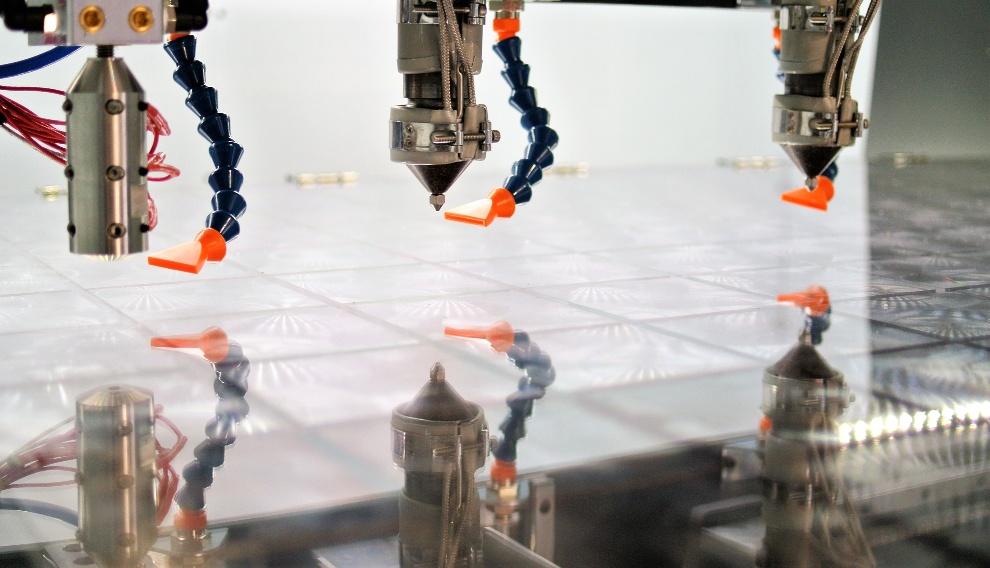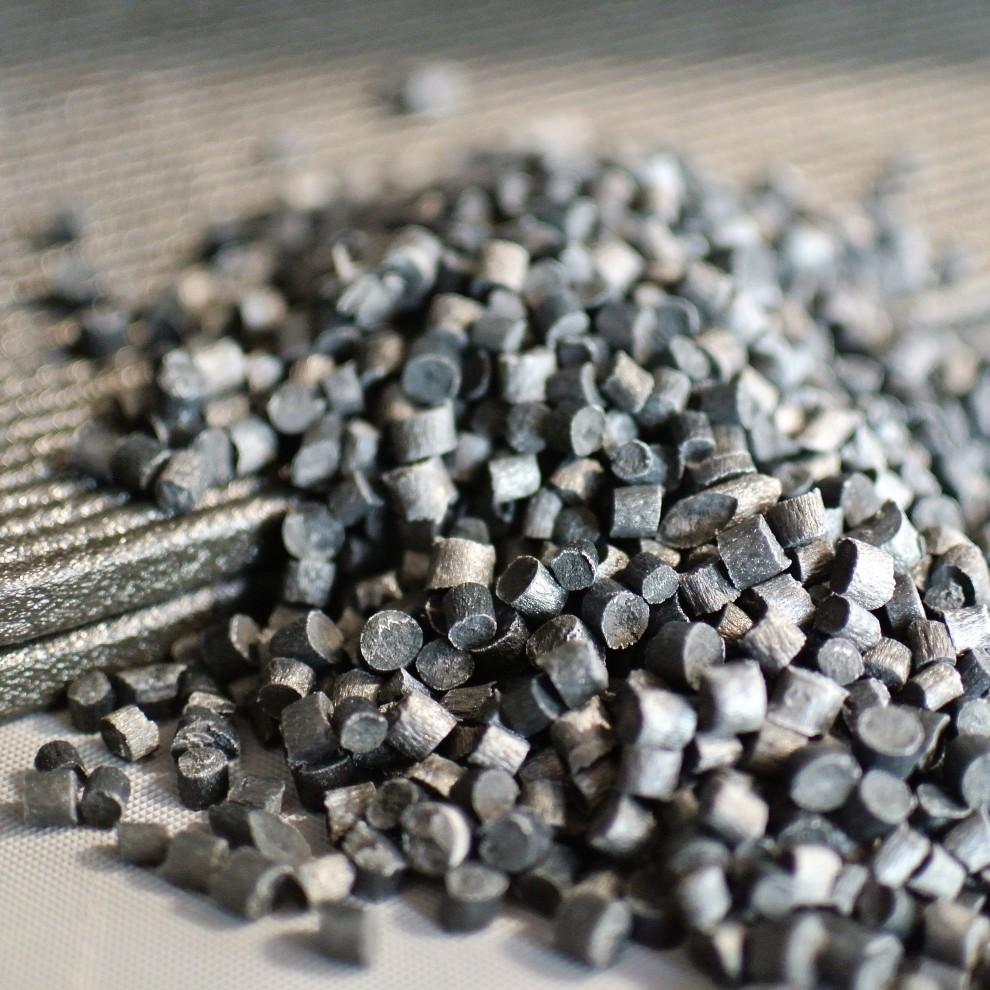- FMA
- The Fabricator
- FABTECH
- Canadian Metalworking
Our Publications
Categories
- Additive Manufacturing
- Aluminum Welding
- Arc Welding
- Assembly and Joining
- Automation and Robotics
- Bending and Forming
- Consumables
- Cutting and Weld Prep
- Electric Vehicles
- En Español
- Finishing
- Hydroforming
- Laser Cutting
- Laser Welding
- Machining
- Manufacturing Software
- Materials Handling
- Metals/Materials
- Oxyfuel Cutting
- Plasma Cutting
- Power Tools
- Punching and Other Holemaking
- Roll Forming
- Safety
- Sawing
- Shearing
- Shop Management
- Testing and Measuring
- Tube and Pipe Fabrication
- Tube and Pipe Production
- Waterjet Cutting
Industry Directory
Webcasts
Podcasts
FAB 40
Advertise
Subscribe
Account Login
Search
Pellet-extrusion systems move 3D printing beyond prototyping
3D printer builder combines pellet and filament extrusion heads in one machine
- By William Leventon
- March 8, 2021
- Article
- Additive Manufacturing

Titan Robotics’ 3D printers can be fitted with pellet and filament extrusion heads. Images: Titan Robotics
Titan Robotics Ltd. builds 3D printers that extrude polymer pellets, a technology aimed at reducing material costs, increasing material options, and speeding the printing process.
“We set out to solve the challenges that had kept 3D printing a prototyping business,” said Clay Guillory, the founder and head of services at Titan, Colorado Springs, Colo. “We saw pellet extrusion as the avenue to get there.”
Pellet-based extrusion technology is similar to fused filament fabrication (FFF). One difference is that pellets are an injection molding-type feedstock, unlike the filament used with traditional FFF printers.
Titan CEO Rahul Kasat said pellets, which are used to make filament, are one-tenth the cost of filament. “So you skip that extra conversion step and [don’t pay] the additional cost of making filament.”
In addition, Kasat pointed out that a pellet extruder melts and deposits plastic significantly faster than filament-based machines. This translates into faster print speeds for both large parts and large numbers of parts.
How much faster? According to Guillory, printing a large part with filament can take weeks, while a pellet extruder can do the job in a matter of hours, depending on the part size and the surface finish required.
Pellet extrusion also opens the door to the use of hundreds of functional materials, Kasat said, including high-performance materials for production of stronger end-use parts. Examples include highly filled materials with 30% to 50% carbon- or glass-fiber reinforcement, which cannot be printed using filament technology, he said.
Titan’s technology can also print flexible materials like TPU and TPE. “Making filaments out of very soft materials is not really feasible,” Kasat said. “Even if you can make [such a material], it’s very difficult to feed into filament printers and get good print quality.”
Focus on Production
Guillory’s focus on production-ready 3D printing stems in part from his background.
“When Clay started the company in 2014, he had been working as a mechanical engineer at a company that built CNC routers,” recalled Maddie Guillory, the firm’s chief marketing officer. “At the time, there wasn’t an industrial solution for 3D printing. Everything was desktop and hobby-grade. So the idea was to implement robust industrial technology for 3D printing.” She added that Titan was one of the first to integrate an industrial CNC controller into its 3D printing system.
The firm’s flagship printer, called Atlas, also features a welded steel frame and servomotors on all axes. Built for the factory floor and lights-out manufacturing, an Atlas machine prints both end-use parts and manufacturing essentials such as tools, molds, and fixtures for customers in the defense, aerospace, foundry, consumer appliances, and visual merchandising industries.
For industrial customers with different needs, Titan customizes its Atlas machines, adding features such as thermal-imaging cameras and input/output devices for specific applications. The company also produces different versions of the Atlas, including the recently introduced Atlas 3.6, which can print 6-ft.-tall parts.
On the smaller side, Titan used Atlas machines to print thousands of polyester headbands for face shields worn by local COVID-19 first responders. “We quickly iterated that design and optimized our toolpath to print 125 at a time on our large print bed,” Maddie Guillory said.
Each headband took less than five minutes to print. Kasat said a single Atlas printer could turn out hundreds per day, while smaller printers maxed out at 10.
According to Kasat, the headbands were good candidates for pellet extrusion printing because they required accuracy but not high surface resolution. “Since you are printing with a larger nozzle and printing fast, you may not get as good a surface finish as you can with filament technology,” he said. “For some applications, however, the surface finish is good enough or people [postprocess the parts] because they see the benefit of using pellets.”
Titan pioneered the idea of pairing pellet and filament extruders on a single machine. A hybrid system can save significantly on costs compared to operating two separate machines, and one machine occupies less space than two.
When designing the hybrid Atlas, challenges included getting the extruders to work together when printing a part and integrating the software for the different extruders.
“It was a lot of work and engineering,” Clay Guillory said.
In production, the hybrid Atlas can build parts from a high-performance material and a soluble support material. It also can print end products made from two different materials.
As an example of the latter, consider a large polymer pattern for a metal casting. For the operation to be feasible using additive manufacturing, most of the pattern would need to be produced quickly and economically with a large-nozzle pellet extruder capable of printing up to 30 lbs. of material per hour. Complicating matters is that the pattern’s design calls for a vein with a highly detailed geometry that requires a very smooth surface finish. This part of the pattern would need to be printed much more slowly using a filament extruder with a small nozzle.
With the hybrid Atlas, Maddie Guillory noted, “one machine can print the bulk of your pattern with pellet extrusion and then print fine-detail parts separately with filament extrusion.”
Pellet Progress
Titan recently expanded its hybrid Atlas line to include a machine that incorporates two pellet extruders and another that’s equipped with pellet extruders and one filament extruder.
Other recent developments at the firm have been in response to customer requests for additional material options. “People always ask about polypropylene,” Kasat said, “but that is one of the most difficult materials to 3D-print.” After working several years with polypropylene manufacturer Braskem, Titan introduced a polypropylene product optimized for printing large-format production parts.
Kasat also touted additional partnerships, including those with Infinite Material Solutions LLC, which now supplies water-soluble support materials for Titan machines, and Jabil Inc., which is working with Titan to introduce nylon-based materials for the 3D printing market.
The company considers these initiatives steps toward the ultimate goal of making 3D printing a top-of-mind manufacturing option.
“Because of their flexibility, we believe 3D printers will become a mainstream production tool,” Kasat said. “Our technology is there to help make that happen.”
About the Author

William Leventon
(609) 926-6447
About the Publication
- Podcasting
- Podcast:
- The Fabricator Podcast
- Published:
- 04/16/2024
- Running Time:
- 63:29
In this episode of The Fabricator Podcast, Caleb Chamberlain, co-founder and CEO of OSH Cut, discusses his company’s...
- Trending Articles
- Industry Events
16th Annual Safety Conference
- April 30 - May 1, 2024
- Elgin,
Pipe and Tube Conference
- May 21 - 22, 2024
- Omaha, NE
World-Class Roll Forming Workshop
- June 5 - 6, 2024
- Louisville, KY
Advanced Laser Application Workshop
- June 25 - 27, 2024
- Novi, MI





























